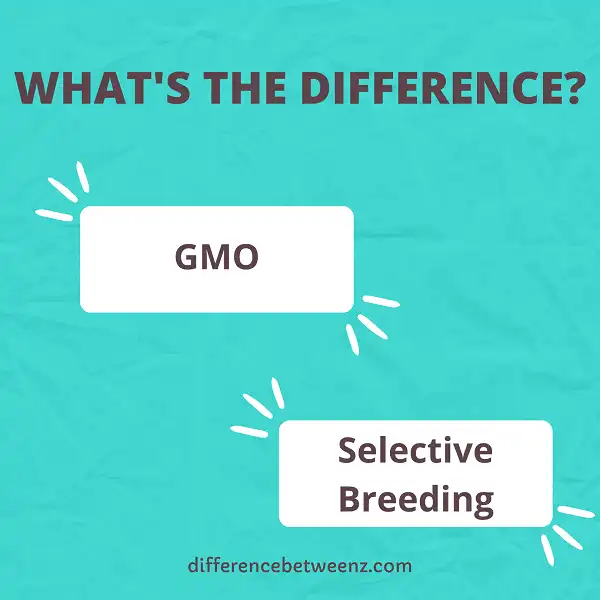A topic that is often up for debate is the difference between GMO crops and selective breeding. Though the two methods of altering crops may seem similar, they actually have many differences. Selective breeding is a process that has been used for centuries to create new plants or animals by crossing different breeds together. GMO crops, on the other hand, are created in a lab using genetic engineering. Simply put, GMOs are plants that have had their DNA altered in a lab to give them specific traits, such as resistance to herbicides or pests. So, which is better? Continue reading to find out!
What is GMO?
GMO crops are plants that have been genetically modified in a laboratory to possess specific traits. The most common GMOs are corn, soybeans, and cotton. These crops have been modified to be resistant to herbicides and pests. GMO crops were first introduced in 1996, and they now make up more than 90% of the corn and soybeans planted in the United States. GMO crops are controversial because some people believe that they are unsafe for human consumption. However, there is no scientific evidence to support this claim. GMO crops are regulated by the FDA, and they must undergo rigorous safety testing before they can be commercially grown. Whether or not you choose to consume GMO foods is a personal decision, but there is no evidence that they pose any harm to human health.
What is Selective Breeding?
Selective breeding is the process of choosing which animals or plants will be used to produce the next generation, and then breeding them for specific traits. Farmers have used selective breeding for thousands of years to produce crops that are resistant to disease, pests, and extreme weather conditions. Today, selective breeding is also used to produce pets with desirable traits, such as specific coat colors or personality types. The main goal of selective breeding is to improve the quality of future generations by increasing beneficial traits and minimizing negative ones. In order to be successful, selective breeders must have a deep understanding of animal physiology and genetics. By carefully planned breeding programs, they can help ensure that only the healthiest and best-quality animals are produced.
Difference between Gmo and Selective Breeding
One of the most common questions asked about GMOs is what exactly they are and how they differ from traditional breeding methods. To put it simply, a GMO (genetically modified organism) is an organism whose genetic material has been altered in a way that does not occur naturally. This can be done in a number of ways, but the most common method is to insert a gene from one organism into another. For example, scientists may take a gene from a fish that helps it to withstand cold temperatures and insert it into a crop plant like corn. As a result, the corn plant would then be able to grow in colder climates.
In contrast, traditional breeding methods involve selecting for specific traits and then cross-breeding organisms with those desired traits. Over time, this process can result in significant changes to the genetic makeup of an organism. However, the changes are generally limited to those that could occur naturally through random mutation. As such, traditional breeding methods are often seen as being more natural than GMOs. It should be noted that there is no evidence to suggest that GMOs are unsafe for human consumption. In fact, many crops that are commonly consumed, such as tomatoes and potatoes, have been genetically modified through traditional breeding methods.
Conclusion
Gmo and selective breeding are both methods of plant and animal husbandry, but there is a big difference between the two. Selective breeding has been used for centuries to create new breeds of plants and animals, while GMOs are a more recent development that has only been around for a few decades. There are pros and cons to each approach, so it’s important to understand the differences before you make a decision about which one is right for you.


